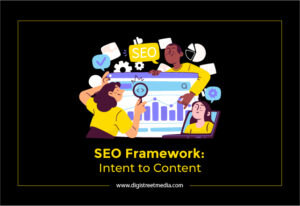The method of optimizing web page content for search engines and visitors is known as on-page SEO (sometimes known as “on-site SEO”). Optimizing title tags, content, internal links, and URLs.
It is different from off-page SEO, which focuses on signals that occur outside of your website.
What Is the Importance of On-Page SEO?
Strong SEO is critical to the success of your website. By doing excellent on-page optimization, you can help search engines relate your content’s relevancy to the query or keyword you’re attempting to rank for. It also includes ensuring that your website possesses a high level of competence, authority, and credibility.
Here is the complete guide for On-Page SEO that would do just the trick for your webpage:
1. Google has indicated that URLs assist them in better understanding the content of a page. So, how do you make your URLs more optimized?
- Include a keyword in the URL: Including your primary keyword in the URL aids both search engines and visitors in comprehending the content of a page.
- Focus left: Place the term as far to the left as feasible in the URL.
- Use meaningful words in your URL as much as possible, rather than the incomprehensible nonsense that specific content management systems churn out.
- Keep them short and sweet: A short and simple URL structure makes it more accessible to Google.
- Use hyphens: Hyphens between words make URLs easier to understand.
- Session IDs should be avoided: Avoid using session IDs in your URLs as much as possible, as they result in an avalanche of URLs for the same page. Instead, Google recommends that you use first-party cookies.
2. E-A-T is an abbreviation for
Google raters use Expertise, Authoritativeness, and Trustworthiness (E-A-T) to evaluate content.
High-quality content has been a priority for Google, and they are rewarded with higher ranks, and vice versa.
There is a direct link between what Google categorizes as high-quality content and what appears in search results.
3. Title Tag
The title tag is neglected since it has little impact on organic rankings on its own.
However, missing, duplicated, or poorly-written title tags can negatively impact your SEO rankings, so optimizing for this part is essential.
4. Meta descriptions have been a vital optimization factor since the beginning of SEO
While Google attests that meta descriptions have no bearing on results, anecdotal evidence denotes otherwise.
Properly optimizing the meta description can help you enhance:
- Click-through Rate (CTR).
- Perception of the result’s quality
- All of your visitors’ perceptions of what your website has to offer shift
5. Optimization of the technical aspects
A website’s three primary technological components that can be optimized are:
Server response time:
Because search engines use website load times as part of their ranking algorithm, improving server response times is an essential aspect of on-page SEO.
Improved website performance can be aided by efficient source code.
IP addresses:
Each web project should, in theory, always have its IP address.
CTA (Call to Action):
By including your main target keyword in the opening paragraph, you can establish your objective right away. Keep in mind that the search engine algorithm looks for keywords and terms that provide information about your content.
Rewrite and revise on-page SEO content
The Google algorithm is dynamic. Revisit your old content regularly and search for methods to better it. Use an on-page SEO checker if necessary.
Image optimization
Give images file names that are descriptive and separated by hyphens. Reduce the file size to ensure that it loads quickly while retaining image quality. Pictures over 400kb bring down the site speed and impair your potential to rank high in Google.
Finally, incorporate content in the image alt tags sprinkled throughout the appropriate keyword. The alt text aids in the understanding of the image by search engines. Understanding what the Google algorithm looks for and what it considers a ranking factor will aid you in making better decisions for your site and improve your SERP rating.







